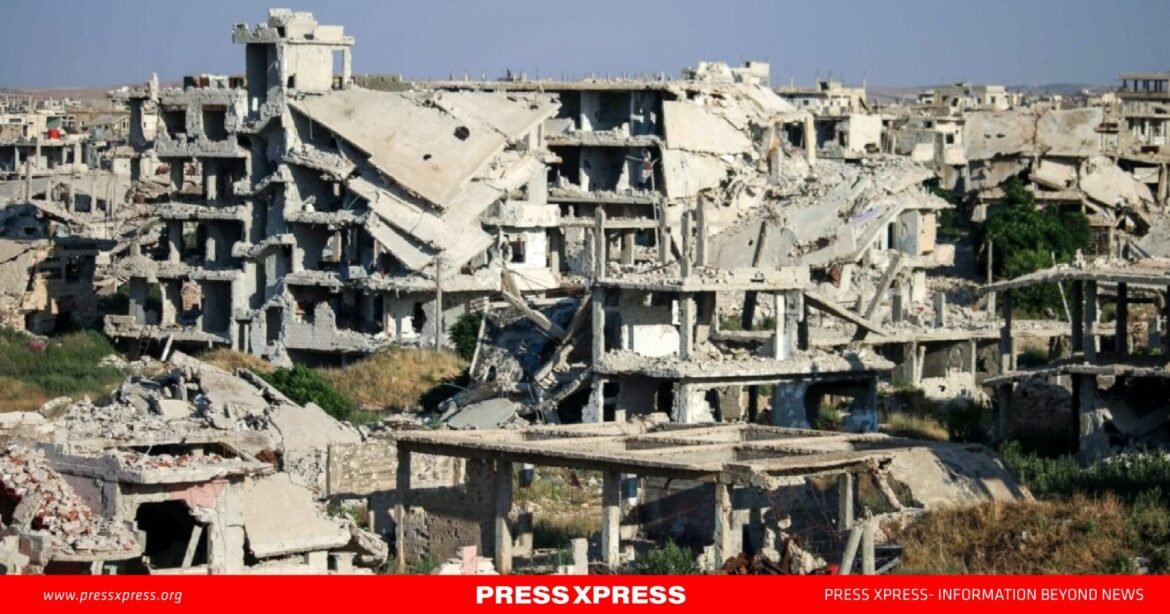Thousands of residents have fled the central Syrian city of Homs, as opposition forces launched an aggressive push southward, threatening government-controlled areas. The Syrian Observatory for Human Rights (SOHR) reported a mass exodus overnight, with many residents seeking refuge in the coastal regions, which remain under the control of President Bashar al-Assad’s government.
The escalating conflict follows the recent capture of key cities like Aleppo in the north and Hama in central Syria by rebel forces, which have dealt significant blows to the Assad regime. With nearly 14 years passing since the outbreak of protests against Assad’s rule, the new rebel advances signal a shifting balance in the long-running civil war.
Fleeing Homs: A Rush to Safety
The SOHR confirmed that displaced residents began leaving on Thursday night, fearing the rebel forces’ rapid advance. A resident in one of the western coastal areas said that thousands were arriving from Homs, with many hoping to escape the violence. “They’re coming with just the clothes on their backs,” the resident stated.
While families flee, heavy airstrikes have intensified across key regions. On Friday morning, Israeli airstrikes targeted two border crossings between Syria and Lebanon, with the Lebanese Transport Minister Ali Hamieh confirming the attack on the Arida crossing. According to the Israeli military, the airstrikes were aimed at weapon transfer hubs allegedly used by Hezbollah to smuggle arms between Syria and Lebanon. The Syrian state news agency SANA reported that the Arida crossing had been rendered out of service due to the attack.
Russian and Israeli Airstrikes Target Key Infrastructure
Further complicating the situation, Russian airstrikes overnight destroyed the Rustan bridge, which lies along the vital M5 highway linking Damascus to Homs. A Syrian army officer told Reuters that the bridge, which had been used by rebel forces for movement and resupply, was struck multiple times, further disrupting rebel logistics.
The rebel offensive, spearheaded by the Islamist group Hayat Tahrir al-Sham, has intensified with the strategic city of Homs now in its sights. The city serves as a critical crossroads, linking the capital to both the northern regions and the Assad-controlled coastal heartland. Rebel commanders have called for an uprising among the residents of Homs, urging them to take up arms against the government. “Your time has come,” the message read.
As the fighting escalates, the role of foreign military powers in Syria remains central to the conflict. Turkey’s Role in the North Turkey has supported various rebel factions since the onset of the civil war, maintaining military positions in the northwestern Idlib region, where it has been engaged in efforts to counter both the Syrian regime and Kurdish groups it views as aligned with the PKK (Kurdistan Workers’ Party). Turkish forces have carried out multiple operations in Syria since 2016, aimed at curbing the rise of Kurdish autonomous regions and securing the return of Syrian refugees.
Russian and Iranian Support for Assad
Russia’s military intervention in 2015 shifted the balance in favor of Assad, with airstrikes and ground forces providing critical support. Moscow’s continued backing of Assad has been instrumental in halting the rebels’ progress in key areas. Iran, meanwhile, has maintained a significant presence in Syria since 2012, with its Revolutionary Guards and allied militias, including Hezbollah, playing key roles in supporting Assad’s regime.
Meanwhile, the U.S. has kept troops in Syria, focused on combating ISIS remnants and supporting Kurdish-led forces in the northeast. The U.S. maintains positions at strategic locations such as the Tanf garrison, near the borders of Jordan and Iraq, where it helps local rebel groups fend off ISIS and other threats.
With Homs now the focal point of an intensifying battle, the outcome of this critical city could shape the future trajectory of the Syrian conflict, with foreign powers, including Turkey, Russia, and the U.S., each maintaining competing interests.


